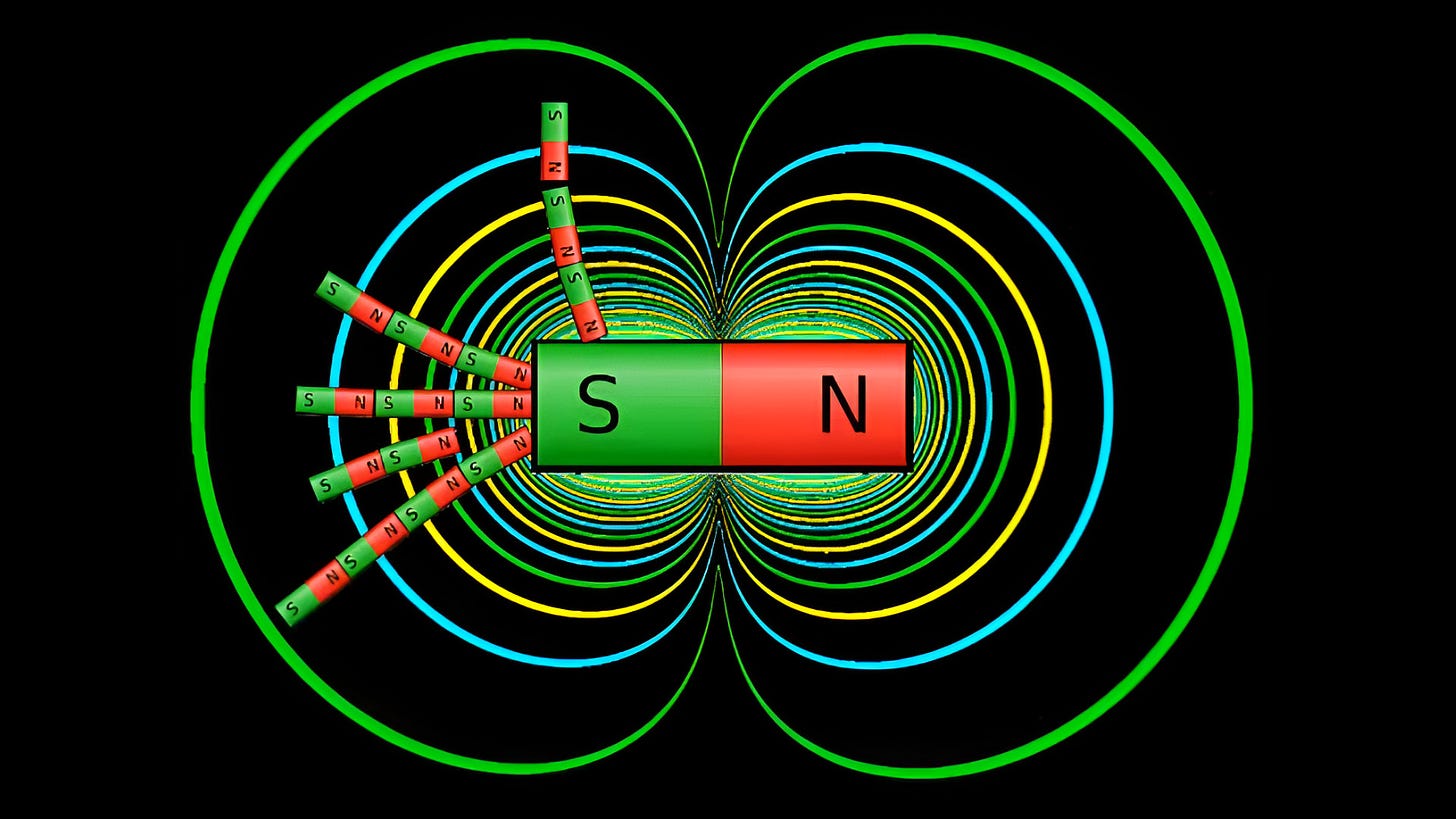Watch on YouTube - Video notes - MES Physics playlist
In this video I summarize the very important work of FractalWoman and Michael Snyder on Isopotentials, which are contours of equal magnetic field strength. These contours are perpendicular to the magnetic field, which is the shape formed by iron filings around a magnet. When plotting out the lines of equal magnetic strength, the shape formed explains many magnetic phenomena in simple terms. The isopotentials represent pressure gradients much the same as contours of air pressure in weather forecasts. When viewing magnetism from the perspective of isopotential lines, it becomes clear why tiny magnets move along curve paths instead of directly towards a bigger magnet. Isopotentials also make clear the expected behavior of Faraday's paradox, the Stern-Gerlach experiment, and the shapes of atomic orbitals.
Links used in this video
Fractal Woman videos:
The Good Vibrations video:
Timestamps:
Magnetic field is shape formed by iron filings in the presence of a magnet or electromagnet: 0:00
Michael Snyder's Pic2Mag app plots contours of equal magnetic field strength: 0:12
Magnetic isopotential lines are perpendicular to magnetic field: 0:33
Magnetic field lines can be thought of as many smaller magnets around a bigger magnet: 0:44
FractalWoman measures voltage readings to obtain isopotential lines: 0:58
Isopotential lines are 3D surfaces: 1:25
Air pressure gradients dictate wing strength: 1:40
Magnetic flux = Aether Flow? 2:00
FractalWoman demonstrates isopotentials on a level table: 2:19
Small magnet rolls along its current isopotential line towards bigger magnet: 2:44
Placing tiny magnet to the left can still make it go to the right along isopotential: 3:10
Small magnet has its own isopotential lines and move towards path of least of resistance: 3:24
Tiny magnet moves along an isopotential line even if pushed forward towards large magnet: 3:40
Tiny magnet follows isopotential even if big magnet is placed on its side: 3:51
Tiny magnet flies to the poles when placed really close to the big magnet: 4:27
Tiny magnet or steel ball bearing can be placed on the side of the big magnet but this is unstable: 4:40
Magnetic isopotentials show the unstable configuration: 5:14
Stern-Gerlach Experiment: Silver atoms deflected up or down in a non-uniform magnetic field due to having an unpaired "spin-up or spin-down" electron: 5:26
Magnetic isopotentials show silver atoms behave like a tiny magnet in the presence of a large magnet: 5:50
Magnetic isopotentials show weak magnetic strength at the center of a stack of magnets: 6:11
The Good Vibrations demonstrates difference in magnetic strength of a stack of magnets: 6:19
Visualizing the isopotential lines in 3D: 6:34
View from the poles shows isopotential lines as concentric circles: 7:00
Faraday's Paradox explained: Rotating magnet doesn't change isopotential lines at the poles: 7:08
Spinning copper disk induces voltage the charges' isopotentials vary relative to the magnet's isopotentials: 7:22
Rotating a magnet does not move iron filings: 7:40
Atomic orbitals match the isopotentials of various configurations of magnets: 7:57














Share this post